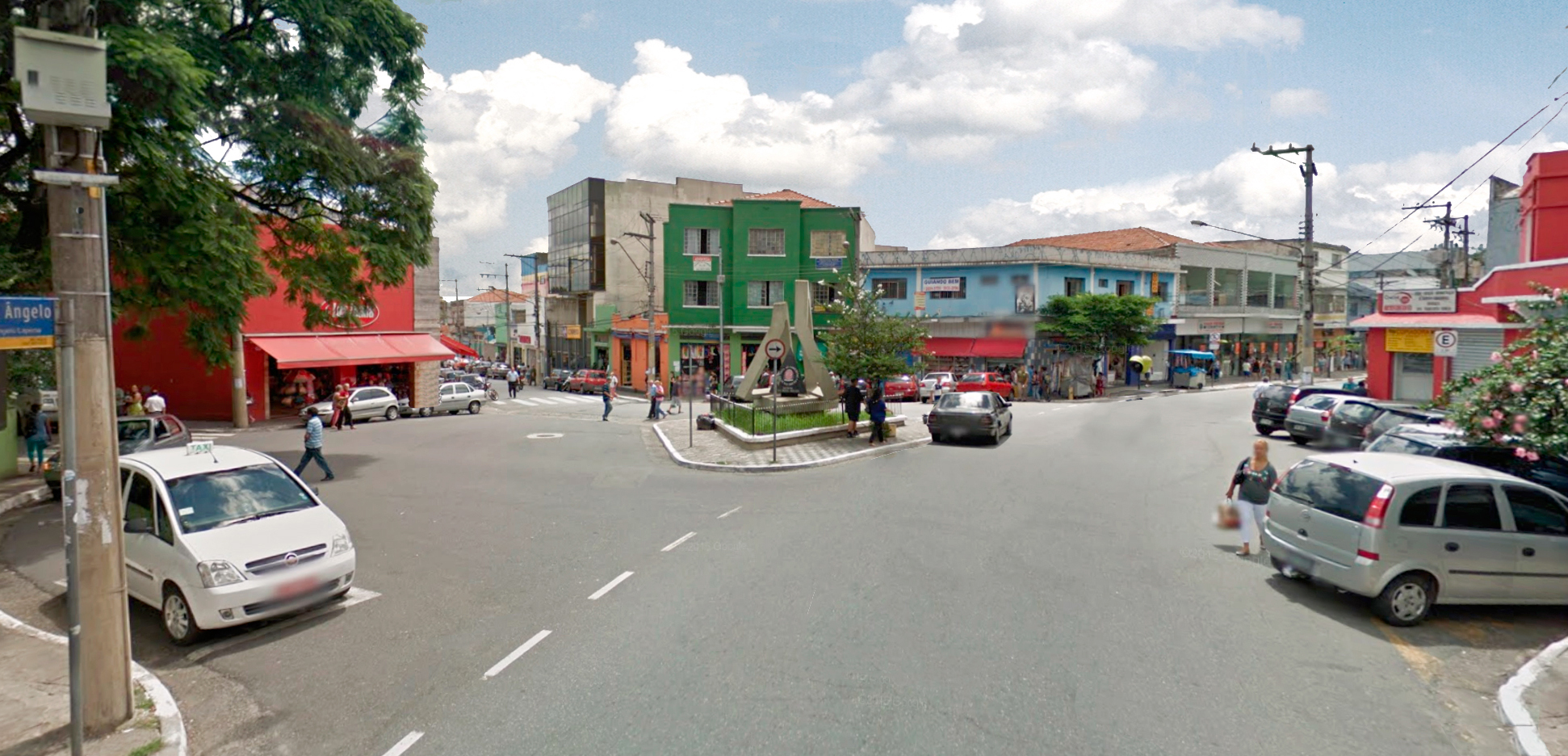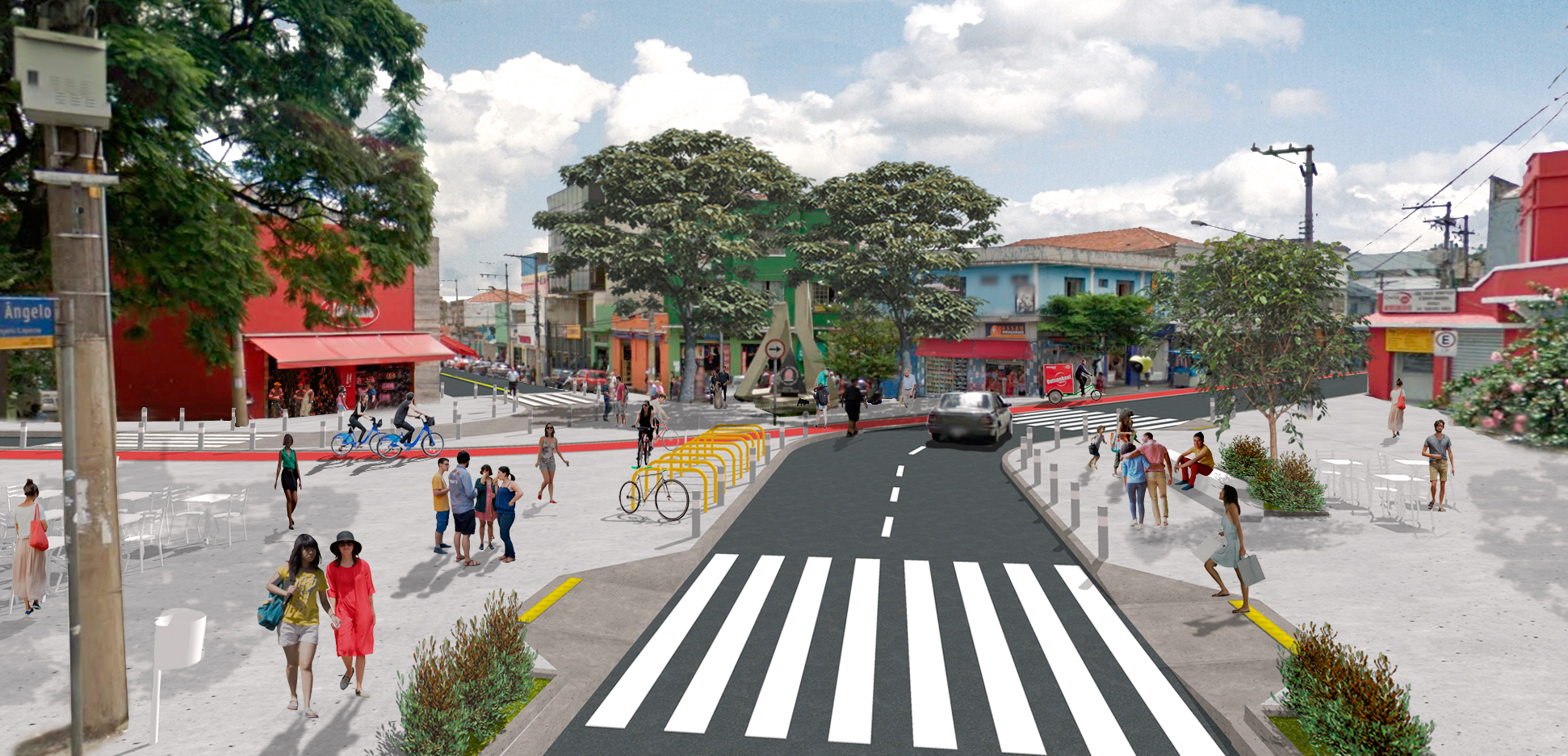
A tactical urbanism intervention in São Miguel Paulista, São Paulo shows the potential of simple design for improving road safety and providing space for people.
According to the World Health Organization, global road deaths equaled 1.25 million in 2015 – more than the number of people killed annually in homicides.
Road safety advocates are striving to cut the number of deaths and injuries from road traffic crashes in half by 2020. To reach that ambitious target, ITDP has been working in Brazil, China, and Mexico using the latest ideas to place people ahead of cars and make roads safer for everyone.
The modern road-safety movement began with Ralph Nader’s 1965 book Unsafe at Any Speed, which called out car manufacturers for failing to include seat belts and other safety features in vehicles. Next came the drunk-driving campaigns of the 1980s and 1990s, led by Mothers Against Drunk Driving (MADD). Personal stories of losing children transformed the conversation around road safety, and the organization became one of the most effective and recognizable advocacy charities in the United States. A new revolution is happening around road safety as streets are redesigned and re-engineered to place people—not cars—at the core of their use.
Three exciting ITDP projects are spearheading the efforts of this revolution: supporting Vision Zero in Mexico City, taking a child-friendly approach to design in Changsha, China, and changing the way citizens interact with their streets in São Paulo, Brazil.
In 2015, Mexico City became the first city in a low or middle-income country to adopt Vision Zero. This approach to road safety proposes that collisions are not “accidents” but preventable incidents that can be avoided by systemic action.
Sweden launched the concept in the 1990s and watched its traffic deaths drop from 7 per 100,000 to less than 3 per 100,000 in 2014. The approach has been successfully adopted in cities throughout Western Europe too, and more recently in North America.
Before Vision Zero policies were implemented, traffic collisions in Mexico City killed around 1,000 people per year—almost three people a day—more than half of them pedestrians or cyclists.
To address this challenge, ITDP worked with a coalition of stakeholders to support Vision Zero adoption. As a result, the city set an ambitious target of reducing fatalities by 35 percent through a combination of law enforcement, street design, and sustainable mobility. What’s more, after only seven months of implementation, the policies have led to an 18 percent decrease in road deaths overall.
Despite this initial success, Vision Zero in Mexico City is at a critical juncture. ITDP is working with the FIA Foundation to address data gaps, vulnerable areas such as school zones, and most importantly, the upcoming mayoral elections. As Mayor Miguel Ángel Mancera turns his focus to the national stage in 2018, Mexico City will be left without its original Vision Zero champion. ITDP will address this gap directly and work during the campaign to put people-centered street design—and the lives saved through Vision Zero policies—on candidates’ agendas.
ITDP is taking a different approach to road safety in Changsha, a city in central China. A startling statistic – according to China’s Department of Transportation Statistics, more than 18,500 children under 14 years old die in traffic every year – led ITDP to work with the City of Changsha to adopt road-safety measures under the Child-Friendly City initiative. These include street design improvements in school zones and road-safety measures incorporated into the city’s long-term development plan for 2050. So far the city has implemented recommended designs in pilot schools, such as improving the walking space around the school and creating waiting areas for parents picking up their kids. The city has committed funding to make additional improvements to sidewalks, intersections, traffic management, and public spaces around schools throughout the city that will put children firmly at the center of street design strategies.
Finally, in early 2017, ITDP’s efforts to promote Zone 40s, or areas of reduced speed and people-centered street design, in São Paulo looked like it had hit a wall. Mayor João Doria took office in January 2017 after explicitly running—and winning on a campaign aimed at increasing speed limits on key expressways with a slogan of “Speed up São Paulo”. One of the administration’s first actions reinstated faster speeds on the expressways in São Paulo and changed the data source for road safety. The situation looked bleak. However, ITDP and a consortium of partners, including the Bloomberg Initiative for Global Road Safety, the World Resource Institute, the National Association of City Transportation Officials, and the Global Designing Cities Initiative, didn’t give up. Through strategic engagement and education on the benefits of street redesigns for Zone 40s in the neighborhoods of São Miguel Paulista and Santana, the City embraced the people-centered street redesigns, and has made a commitment to scale up of the efforts throughout the city. This is good news for the citizens of São Paulo as early tests of street redesigns show dramatic improvements to the comfort and enjoyment of pedestrians using the temporarily redesigned streets.
These exciting examples from around the world are just a few of the ways that ITDP is helping cities rethink the way they design their urban environment. As 2018 unfolds, ITDP will move forward with these projects and many more through our field offices. After nearly a century of building for cars, it’s time for cities to put people first.
 This blog post is modified from an article in the 29th issue of the Sustainable Transport magazine. You can find the article and others here.
This blog post is modified from an article in the 29th issue of the Sustainable Transport magazine. You can find the article and others here.


